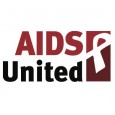The House Committee on Appropriations has recently announced new rules for community project funding. This process, also known as earmarking or pork-barrel spending, is the often misunderstood and disparaged funding process of inserting provisions into appropriations bills that allow for the direct funding of certain projects. This means that these funding recipients will not have to respond to requests for proposals to receive federal dollars.
This is an important opportunity for HIV organizations to send in proposals to their elected officials to receive funding that has been previously inaccessible for many organizations.
What is community project funding, otherwise known as earmarking?
The process involves carving out a chunk of money that the government spends to allow members of Congress to meet funding priorities for the people of their district or state.
When used appropriately, this can be a highly responsive mechanism for financial resources that allows for the direct allocation of funds to those in the community they represent. This allows for members of Congress to push for funding for those working on issues that impact their district that might not receive the attention they deserve in the overall federal budget. New rules regulating the process would make the process of receiving these funds more transparent, leading to greater opportunities for those looking for additional funding.
What are the rules?
The new rules allow for members of the House to submit up to 10 community projects for the appropriations committee to consider. While there is the ability to submit 10 proposals, it is likely that only a handful will be approved and funded. These funding requests will be available for public scrutiny online to ensure that legislators are held accountable.
Funding for community project funding will be limited to 1% of all discretionary funding, so it will be important to submit these requests early. Additionally, the House only allows organizations for state and local government grantees and eligible nonprofits to submit requests for this funding. For more information on the specific rules, refer to this fact sheet from the chair of the House Appropriations Committee.
Opportunity for HIV organizations:
This is an excellent opportunity for organizations who are looking for funding but may not have the bandwidth to write and compete for larger grants. Organizations that are nonprofits and have a relationship with their member of Congress should be encouraged to submit proposals for this funding. The best first step is to reach out to the representative’s staffer who handles the appropriations process and to place a request for more information regarding community project funding.








Comments
Comments